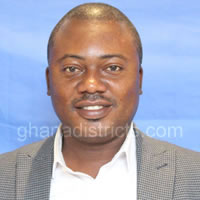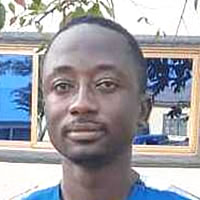Physical and Natural Environment
Location and Size
Asante Akim North Municipal Assembly is one of the newly created districts in Ghana. It was carved out of the then Asante Akim North Municipal Assembly (Now Asante Akim Central Municipal) in 2012. It was established by LI 2057 and inaugurated on 28th June, 2012. Agogo is the administrative capital of the Municipality. The Municipalityshares boundaries with Sekyere Kumawu and Sekyere Afram Plains Districts in the north, Kwahu East District in the east, Asante Akim South Municipal in the south and Sekyere East District in the west. The Municipality is located in the eastern part of Ashanti Region and lies between latitude 60 30’ North and 70 30’ North and longitude 00 15’ West and 10 20’ West. It covers a land area of 1,125square kilometers. The proximity of the Municipality to the Eastern Region provides ready markets for its agricultural produce.
Relief and Drainage
Topographically, the Municipality is undulating ranging between 305 and 610 metres and it is interrupted by a stretch of the Akwepim-Mampong Ridge. The Akwapim- Mampong Range serves as a watershed for the numerous of rivers and streams in the district. The Municipality is drained by such rivers as Oweri and Afram. The existence of rivers is a potential for the construction of dams for irrigational purposes. The steep slopes at Kyiriyawa near Hwidiem and Onyem have created waterfalls which are yet to be developed as tourist sites.
Climate
The Municipality experiences wet semi-equitorial climate. The rainfall regime is double maxima with annual rainfall between 125cm and 175cm occurring in July and November; the first rainy season from May to July and the second from September to November. The dry harmattan season occurs between December and March and is associated with drought conditions. Streams dry up during this period. Temperature is found to be uniformly high all year round with a mean annual temperature of 26oC. The climate is favorable for cultivation of tree crops and cereals.
Vegetation
The Municipality lies within the moist semi-deciduous forest belt. The major vegetation types are the Open Forest over the highland areas, the Closed Forest on the range and the Wooded Savannah. Tree species found in the forest are Wawa, Ofram, Otie, Sapele, Sanfina, Onyina among others.
The original forest of the Municipality has degenerated into secondary forest due to indiscriminate logging of trees, inappropriate farming methods and bush burning. In order to maintain the microclimate, parts of the forests in the Municipality have been reserved namely;
· The Bandai Hill in the north which covers an area of 160.8 sq. km
· The Bandai Hill in the west which stretches for 72.8 sq. km and Onyemso and Dome
· River Reserves which covers an area of 15.5 sq. km
The forest reserves serve as a source of raw materials for the building and construction industries as well as a source of income to the assembly in terms of royalties (stool lands) and legal timber firms operating in the Municipality as concessions. Most of the forest reserves are endowed with mushrooms and snails hence the Municipality has the potential for mushroom and snail farming.
Geology and Minerals
The underlying rocks which form the geological base of the Municipality include:
· The Konongo-Juansa area is made up of Metamorphosed lava, pyrodestic rock, quartzites, Phyllites, grits, conglomerate
and schist.
· The Adiembra-Kyekyewere is underlain with Tuffs, and Greyoals. The same geological base is also found in the Agogo- Hwidiem area, while the Quartzites, Phyllites, Grits, Conglomerate and Schist, which is common in the Konongo, Juansa areas can also be found at the Pataban, and Awanie area.
· Sandstone is found in the Ananekrom -Bebome area, while Shale and Mindstone are found at Onyemso and Sratoase area.
The natural resources that can be found in the District are mainly minerals and forest products as well as water bodies. The Praaso-Dwease-Akutuase stretch is underlained with Granite, Briotite, and Muscovite. Mineral resources include gold deposits found in the metamorphosed lava, stretching from the Konongo-Odumasi area to Juansa and also the strip from the Kyekyewere to Pekyerekye.
Other gold bearing rocks include Granite, Biotite and Muscovite found at Wioso area.
Soils
The two predominant soil types are the Forest Ochrosol and Savannah Ochrosol. The Forest Ochrosol is fertile and supports the cultivation of cereals, oil palm, cassava, plantain, cocoa and vegetables. The Savannah Ochrosol is well leached, richly endowed with organic matter and supports the cultivation of yam, maize, cassava, groundnut and vegetables.
Land Management
All lands in the Municipality belong to the stools and are therefore controlled by the chiefs and their elders. The department of Town and Country Planning manages the spatial development in settlements. However, lack of land use schemes in most of the communities has led to haphazard development.
Conditions of the Natural Environment
The natural environment of the Asante Akim North Municipality has altered markedly owing to human activities. The forests, rivers, soils among others have all been harmfully impacted. The activities of human that have impacted on the environment take the form of land degradation.
The slash and burn practice in the shifting cultivations method of farming not only leaves the farming land bare and expose it to sunshine and erosion but also, destroys the natural vegetation and change the ecology of the Municipality. It has reduced most part of the original evergreen forest into secondary forest.
The use of wood and charcoal as the main source of energy has also contributed to the exhaustion of the tree species. The proportion of the household that use firewood and charcoal for cooking is about 84% (2010 Population and Housing Census.). Lumbering and chainsaw operators contribute immensely in the reduction of the original rain forest.
Bush farming has been a contributing factor in destroying the natural vegetation. The major causes of bush burning are inappropriate slash and burn farming methods and the people’s desire to flash out and hunt game from the bushes. Fire is set into the bush during the dry season to hunt grass-cutters and rats. Overgrazing by cattle in the Northern part of the Municipality has led to the land degradation
The extent of the degradation of the natural environment and its consequences of the natural resources such as land, water bodies cannot be over emphasized. The activities of the chainsaw operators are resulting in the rapid depletion of economic trees. It is very important therefore for the Municipality to regularize their activities.
The Built Environment
Majority of the settlements do not have layouts and this has led to chaotic development. The only settlement that has layout is the Municipal capital, Agogo. Even here, building regulations are not complied to and this poses severe effect on the land use pattern.About 53 percent (2010 Population and Housing Census) of the houses in the Municipality are compound houses and are mostly constructed cement and mud. Corrugated metal sheet is the main roofing material.
The housing environment in the Municipality, especially Agogo and Juansa townships are characterized by poor drains, heaps of surface dumps, unkempt surroundings, exposed foundations due to pronounced erosion and cracked walls especially in the rural areas.
A greater proportion (45.2%) of the population use the public toilet facility, 20.9 percent use pit latrine and only 7 percent of the houses in the district use water closet. Since majority of the houses in the Municipality is the compound type, majority of the households use shared separate bathroom in the same house.
Majority of the households use the public dump to dispose of solid waste. In terms of liquid waste disposal, majority of the population dispose their waste either on their compound, the closest street outside their houses or into nearby drains and gutters.
Environmental Health and Sanitation issues continue to be one of the major problems facing the Municipality.
This include inadequate public/household latrines thus exacerbating pressure on the few public toilets; indiscriminate defecating and dumping of refuse and excreta in drains and bush; choked gutters; piles of accumulated refuse/garbage at dump sites in some parts of localities and littering of public places. In terms of solid waste the Municipality’s capital generate about 1166.46 cubic metres per day whiles it generate about 58556.3 litres per day of liquid waste.
Random discarding of solid and liquid waste tends to create filthy environments leading to the breeding of mosquitoes and may increase malaria cases as well as other diseases such as typhoid fever, diarrhoea and cholera. Water supply is generally inadequate, considering the difficulty women and children have to go through to meet their water requirement, serious efforts need to be made to ensure adequate supply of water for the people. Electricity coverage in the Municipality is about 58 percent.
The Volta River Authority (VRA) and Electricity Company of Ghana are responsible for power supply in the Municipality. Housing problem in the Municipality is more of a qualitative rather than quantitative. The Municipality has a household size of 4.5 which is in conformity with the national average of 4.5 but higher than the regional average of 4.2.
Date Created : 11/21/2017 3:12:52 AM






 facebook
facebook twitter
twitter Youtube
Youtube TOLL FREE 0800 430 430
TOLL FREE 0800 430 430 +233 593 831 280
+233 593 831 280 GPS: GE-231-4383
GPS: GE-231-4383 info@ghanadistricts.com
info@ghanadistricts.com Box GP1044, Accra, Ghana
Box GP1044, Accra, Ghana